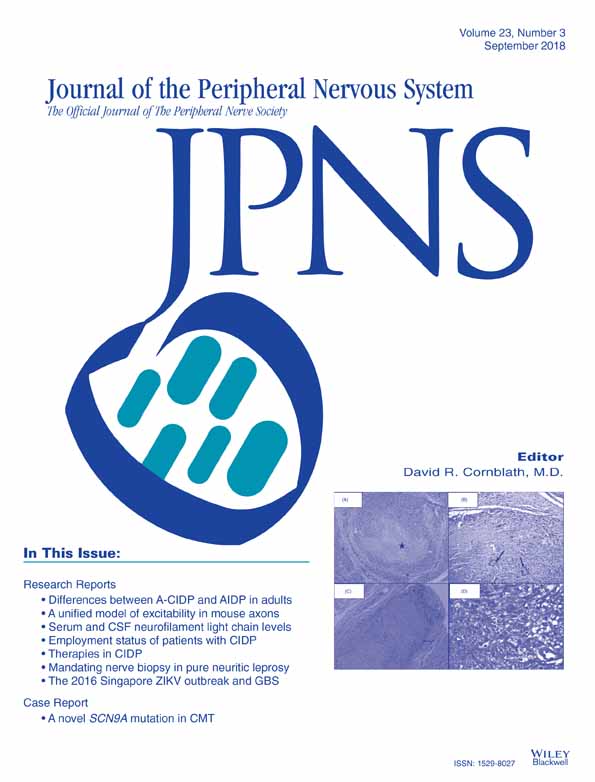Serum and cerebrospinal neurofilament light chain levels in patients with acquired peripheral neuropathies
Abstract
Neurofilament light chain (NFL) levels reflect axonal damage in different inflammatory and neurodegenerative central nervous system conditions, in correlation with disease severity. Our aim was to determine the possible diagnostic and prognostic value of serum and cerebrospinal fluid (CSF) NFL levels in subjects with different forms of acquired peripheral neuropathies (PN). Paired serum and CSF samples of 25 patients with acquired PN were analysed for NFL using an ultrasensitive technique (Quanterix, Simoa, Lexington, MA, USA) and compared with a group of 25 age-matched healthy subjects. Demographic, clinical, CSF and neurophysiological data were reviewed. Cases with Guillain-Barré syndrome (N = 5), multifocal motor neuropathy (N = 3), chronic inflammatory demyelinating polyneuropathy (CIDP) and variants (N = 12), anti-myelin-associated glycoprotein (MAG) neuropathy (N = 3), both CIDP and anti-MAG neuropathy (N = 1), and non-systemic vasculitic neuropathy (N = 1) were studied. NFL levels were significantly (P < 0.001) increased in patients with PN and were higher in the CSF (median: 1407 pg/mL, range: 140.2-12 661) than in serum (median: 31.52 pg/mL, range: 4.33-1178). A statistically significant correlation was observed between serum and CSF levels in cases with blood-nerve-barrier damage (r = 0.71, P < 0.01), and between serum NFL levels and disease activity at sampling (r = 0.52, P < 0.01) and at last follow-up (r = 0.53, P < 0.01) in all subjects. The increase of NFL values in both serum and CSF of patients with acquired PN and the significant correlation between serum NFL levels, disease severity and final outcome support the possible role of NFL as disease activity and prognostic biomarker also in peripheral nervous system disorders.




